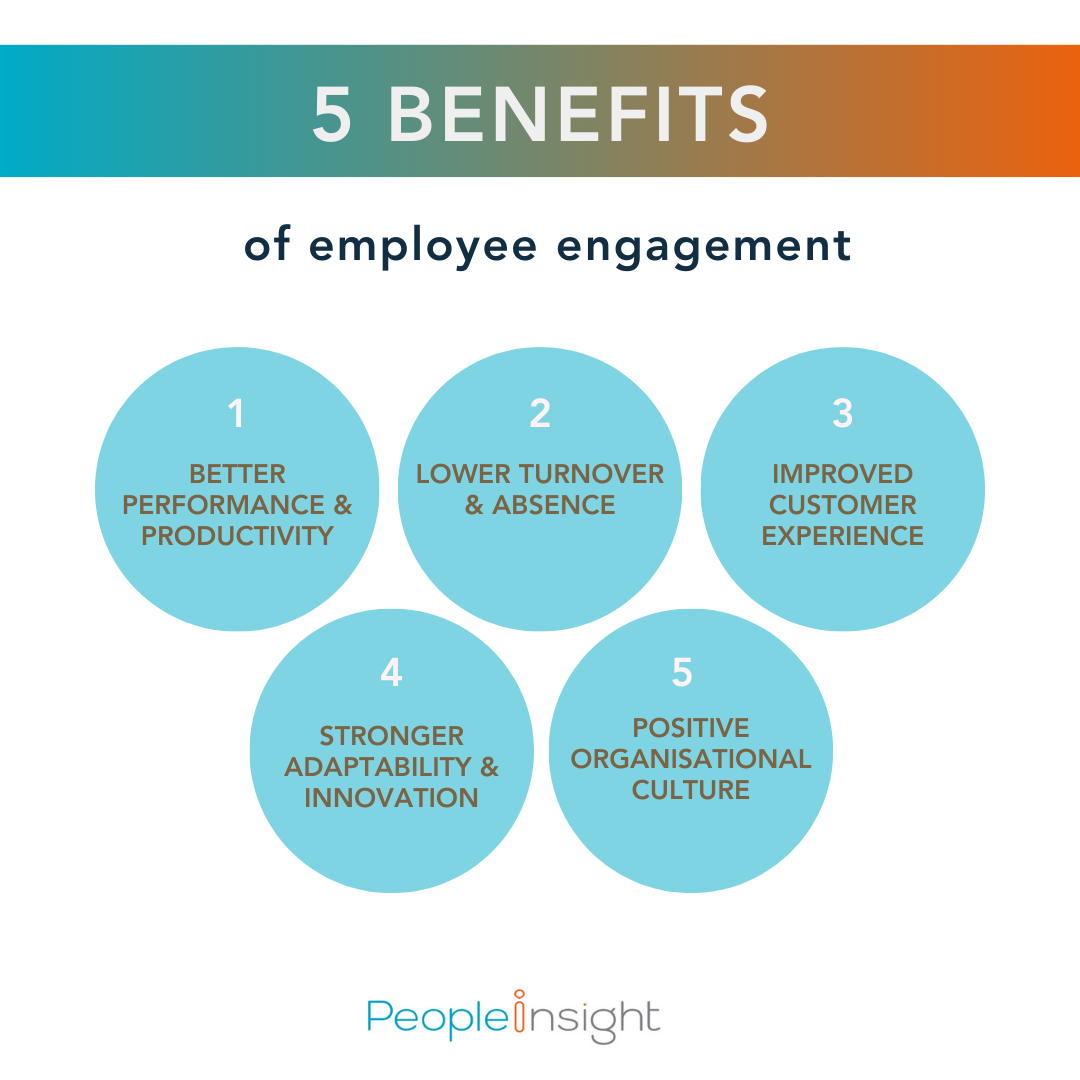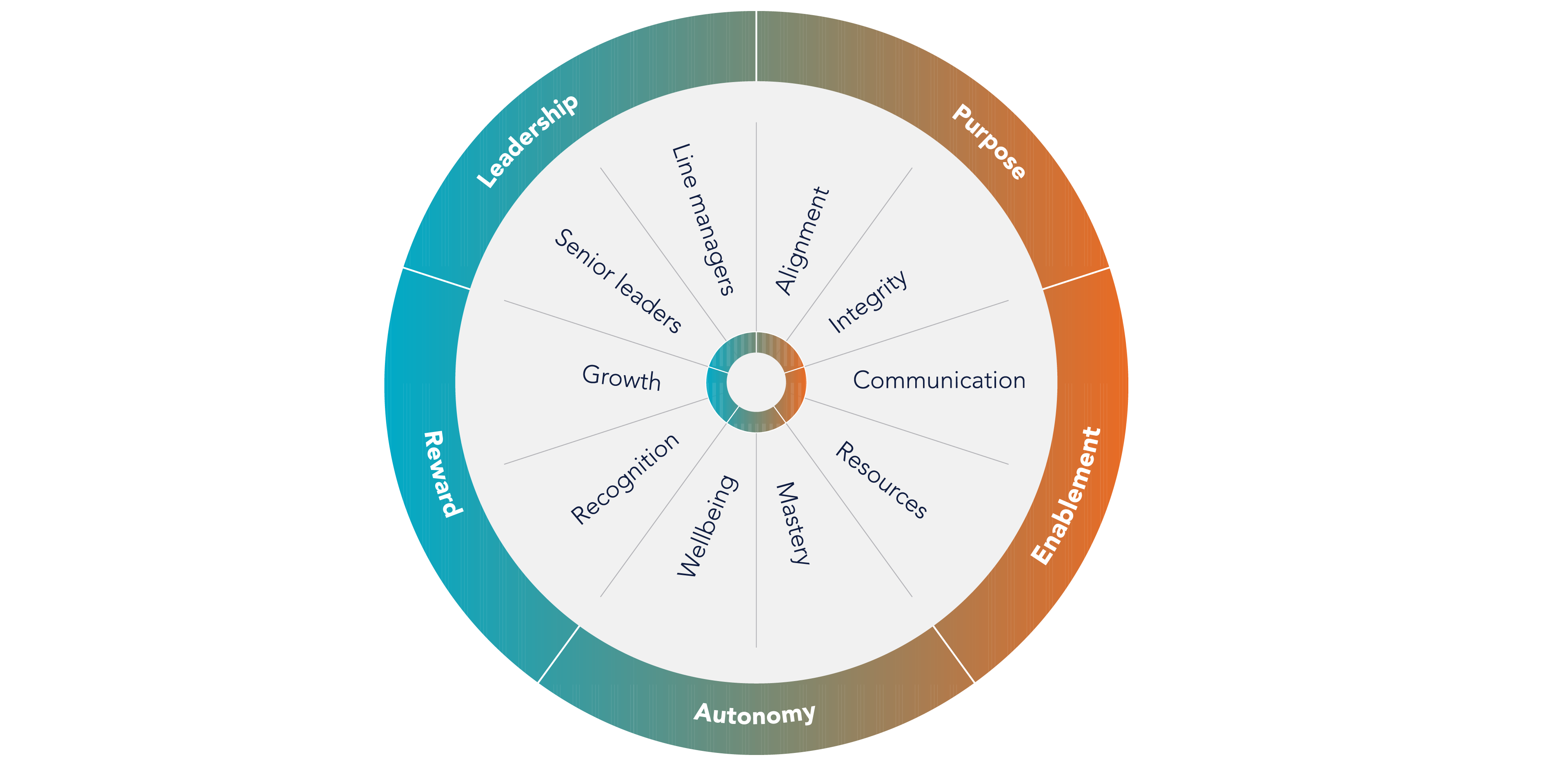
Everything you need to know about employee engagement and how to build a culture where people want to do their best Let’s be honest — employee engagement gets talked about a lot. But what does it actually mean in practice? And more importantly, why should it matter to you and your organisation?
At its core, employee engagement is about how people feel at work, how connected they are to what they do, who they work with and the goals they’re working towards. When people are engaged, they don’t just clock in and out. They care. They show up, get involved and bring their best to the table.
In this post we’ll break down exactly what employee engagement is (and isn’t), why it matters and what it looks like in practice. Whether you’re leading a team, shaping HR strategy or just trying to create a better place to work, understanding engagement is the first step.
Related: Employee experience vs employee engagement
Employee engagement is the emotional commitment someone has to their work, their colleagues and the organisation they work for. It’s about how people feel when they come to work — whether they feel connected, motivated and involved in what they’re doing.
It’s not the same as job satisfaction or happiness. Engagement is deeper. It reflects whether someone feels their work matters, whether they care about the organisation’s goals and whether they want to contribute to its success.
Everyone experiences engagement in their own way. For some people, it’s about feeling a sense of purpose. For others, it might be about trust, recognition or being able to make decisions about their work. However it shows up, engagement is about the emotional connection people have with their working life.
Beyond the day-to-day benefits, engagement plays a key role in delivering long-term strategy. Whether you’re focused on growth, transformation, sustainability or digital change, you need people who are committed, adaptable and ready to contribute to something bigger. Engagement is what turns a strategic plan into something people believe in and want to be part of.
While you’re here check out our webinar on connecting staff surveys with purpose
You don’t need to wait for survey results to spot engagement. In many cases, you’ll see it in how people show up, interact and go about their work. While every workplace is different, here are a few signs that people are genuinely engaged:
1. They speak up and share ideas: Engaged employees feel comfortable contributing — whether that’s in meetings, feedback sessions or casual chats.
2. They support one another: Collaboration happens naturally. People check in on their teammates, offer help and celebrate each other’s successes.
3. They go the extra mile: You’ll see people volunteering for projects, finding ways to improve things or offering suggestions unprompted.
4. They’re present and consistent: Engagement shows in the basics too — like low unplanned absence, good time management and follow-through on commitments.
5. They show pride in their work: Whether they’re frontline staff or part of the leadership team, engaged people take ownership of their work and want it to reflect well on the organisation.
These signs aren’t about overwork or being constantly ‘on’ — they’re about emotional investment, motivation and connection to the work and the team.
Understanding what engagement is gives us a foundation. Now let’s explore why it’s worth focusing on.
When employees feel engaged, the impact is seen across almost every part of an organisation. From performance and retention to innovation and customer experience, engagement plays a major role in how successful an organisation can be.

Engaged employees put more thought and energy into their work. They’re proactive, focused and take responsibility for getting things done well. This often leads to improved outcomes across teams and functions. In fact, we know that companies with high levels of employee engagement are known to be up to 21% more productive than those with low levels of engagement.
When people feel connected to their work and valued by their organisation, they’re more likely to stay. Engagement helps reduce employee turnover and lowers the risk of burnout and unplanned absence.
People who feel positive about their role tend to create better experiences for customers. Whether directly or indirectly, engaged employees contribute to stronger relationships with clients, users or service recipients.
Engaged employees are more likely to get involved in change, share ideas and help shape new ways of working. They’re invested in making things better, not just sticking with what’s familiar.
High levels of engagement help create a workplace where people support one another, communicate openly and feel comfortable speaking up. This kind of culture makes it easier to build trust and navigate challenges together.
Related: 25 Inspirational employee engagement quotes
Before you build an employee engagement strategy, you need to be clear on what engagement looks like in your context. Start by asking:
Employee surveys are a valuable tool to capture these insights at scale. Focus groups and one-to-one conversations add further depth, helping you understand the behaviours and conditions that drive engagement.
Next, think about the outcomes you’re aiming for. If your focus is on customer experience, then engagement might involve employees going out of their way to deliver high standards of service. If innovation is the priority, then engagement might be reflected in idea-sharing and collaboration.
Ask yourself:
At People Insight, we define and measure employee engagement through five key indicators from our Pearl™ model, grounded in research and tested across multiple sectors:

Purpose is about more than mission statements — it’s about how employees perceive their role within the broader goals of the organisation. When individuals see how their contributions align with the organisation’s vision, they feel connected and motivated.
Enablement is about whether employees have what they need to do their job well — the right tools, clear processes and supportive teams.
Autonomy is about giving employees control over how they work, which builds trust and supports mental wellbeing. Flexibility helps people manage stress and stay motivated.
Reward isn’t just pay — it’s about feeling appreciated and being given the opportunity to grow. Recognition and clear development paths keep employees engaged and committed.
Engaged employees need to trust their leaders. When senior leaders and managers communicate clearly, act with empathy and support development, they build confidence and connection.
Employee engagement is a continuous journey, not a one-time fix. It’s an ongoing process that involves listening to your people, aligning goals, providing support and fostering a culture of trust and recognition.
By understanding the key drivers of engagement and implementing strategies that address them, you can create an environment where employees are more motivated, productive and loyal.
Employee surveys are a great place to start in your efforts to measure and improve engagement. By gathering actionable data and making strategic improvements, you’ll be well on your way to creating an environment where employees feel connected, supported and inspired.
Interested in measuring engagement at your organisation? Get in touch to talk about how our employee engagement surveys can help you build a more engaged, inclusive and high-performing culture.

